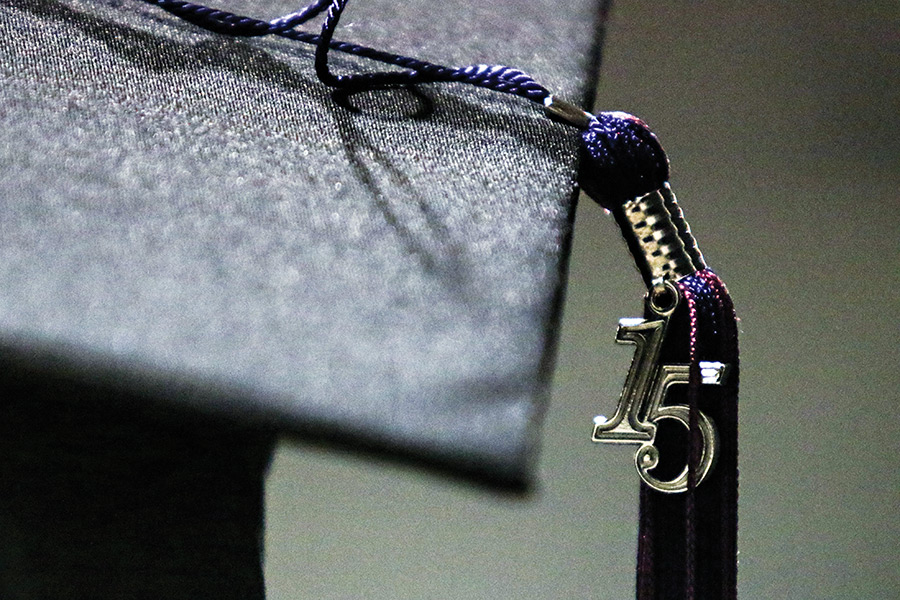It’s the end of another school year, and with a flourish of tossed hats and tassels, a new crop of seniors is leaving the nest and headed toward a new chapter of life.
For many, this transition means higher education. These days, the move to college or university typically includes tacking on a hefty load of student loans, since the price for college in the U.S. continues to increase, outpacing overall inflation for decades.
Since the 1980s, the average annual fees and tuition for in-state, public, four-year institutions across the country have risen about 225 percent to an average of $9,139, while private school costs have increased by 146 percent to an average of $31,231.
Similarly, student loan debt across the U.S. has also increased. According to a study released in February from the Federal Reserve Bank of New York, education debt is the second-highest form of debt for Americans, behind mortgages.
The study found that as of the fourth quarter of 2014, Americans had $8.17 trillion in mortgage debt, followed by $1.16 trillion in student loan debt, more than the total auto loan debt ($955 billion) and all credit card debt ($700 billion). In 2004, the total student loan debt was about $300 billion.
According to a report from the College Board, tuition increases aren’t accelerating, but undergrad debt is accumulating because other than for the nation’s top earners, incomes haven’t grown for more than 10 years.
The Fed also found that delinquencies on student loan repayment increased, to 11.3 percent up from 11.1 percent. Such delinquencies and repayment problems can hamper a borrower’s “ability to form their own households,” the Fed reported.
This means post-graduation, borrowers facing down their student loan repayments can have trouble starting their own businesses, because their capacity for debt is already subsumed by the student loan, according to a study from Pennsylvania State University and the Federal Reserve Bank of Philadelphia.
For many students and, often, their families, the big question is whether the degree they earn with those loans will lead to a job that can produce the paychecks to handle the debt.
Cindy Kiefer, director of financial aid at Flathead Valley Community College, said FVCC’s goal is to make the reality of student loans actually sink in for incoming students.
“This affects your life,” Kiefer said. “It will follow you for at least 10 years.”
All students applying for financial aid at FVCC must go through a counseling session, during which they are asked to project out their lives and finances for four years to get a look at what monthly payments will be like.
“We have them get online and go through simple budget stuff to have them look at, ‘Hey, do you really even need this loan?’ and try to get them to think about it before they get it,” Kiefer said.
Tuition at a community college, such as FVCC, will be lower than at a public four-year institution; taking 14 to 18 credits at FVCC costs $1,982.60. Kiefer said everyone headed to college or university should apply for as many scholarships as possible to relieve the burden of what must be borrowed.
If students entering FVCC placed in the top 10 percent of their senior class, they receive a waiver for all but about $500 of their tuition, Kiefer said. And students who have a 3.5 cumulative GPA in their second year and have completed 30 credits at FVCC can also receive the same waiver.
Still, Kiefer acknowledged that loans are a necessity for many. She advised to use the federally subsidized loans first, which have interest paid by the government while the student is enrolled, instead of the unsubsidized loans, which garner interest from their inception.
“The main thing is apply for scholarships no matter where you’re going to school because any free money is going to prevent you from having to borrow,” Kiefer said.
Students already in school can also look at joining programs or professions that have loan repayment plans, such as the military or teaching or health care. Service programs, such as the Peace Corps and AmeriCorps, also offer tuition repayment finances.
Sarah Sadowski, the grants manager for the Governor’s Office of Community Service, said AmeriCorps members who serve for a full year receive the Segal AmeriCorps Education Award, which sits at $5,730 this year.
“That’s an amazing opportunity,” Sadowski said.
AmeriCorps members 55 and older can transfer their education award to a family member, Sadowski said, and a joint effort from the Governor’s Office of Community Service, Student Assistance Foundation and Montana Campus Compact also offer a $1,000 scholarship toward an in-state public school for high school seniors who have completed 100 hours of community service.
“We just produced 98 of those,” she said.
Since it was started in 1994, AmeriCorps has produced 800,000 alumni across the country who earned more than $2.4 billion in education awards.
And just recently, 12 campuses across Montana announced that they would be matching the Segal Award up to a certain point, according to Josh Vanek, the interim director of Montana Campus Compact.
For instance, FVCC will match it up to $1,000, Carroll College will match up to $2,000, Montana State University will match up to $1,000, and the University of Montana will match up to $1,000.
Vanek said many people serving in AmeriCorps are either looking to continue their education or are searching for their careers, so providing a reason to go to a Montana school will benefit the state.
“I think we have a great opportunity, because we do bring so many people to Montana for service,” Vanek said.
